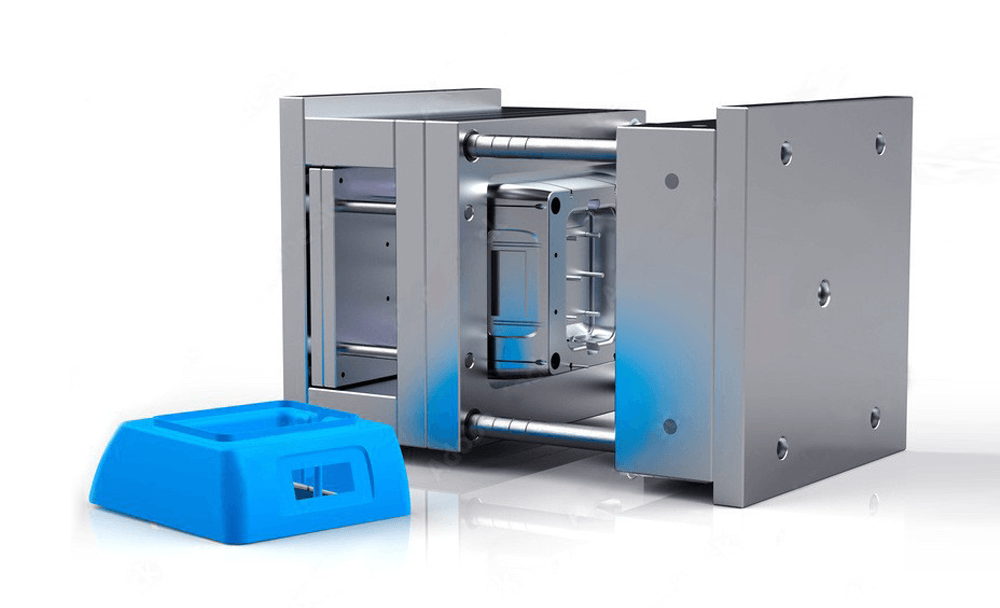Plastic injection molding process parameter 1:Temperature and pressure

Click this to know: injection molding process parameter: speed
Click this to know: injection molding process parameter: Time
The setting of plastic injection parameters generally depends on five main conditions: temperature, pressure, speed, time, and measurement.
This article mainly describes the temperature and pressure of injection molding process.
Injection Molding Temperature
The temperatures that need to be controlled during injection molding include melting temperature, mold temperature and cooling temperature.
In the injection molding process, it is necessary to accurately control the furnace temperature according to the specific plastic raw material type, shape and processing requirements and other factors to ensure that the quality and performance of the molded products meet the requirements.
Injection Molding Melting Temperature

The furnace temperature of injection molding refers to the temperature required to melt the plastic raw material into a molten state. The furnace temperature in the injection molding process needs to be adjusted according to the type of plastic raw material used, shape and processing requirements.
Generally, plastic raw materials for injection molding can be divided into thermoplastics and thermosetting plastics. Thermoplastics have a low melting point, generally between 150 ° C and 300 ° C, while thermosetting plastics have a higher melting point, generally between 250 ° C and 400 ° C. Therefore, the temperature of the injection molding furnace will also vary.
In the process of injection molding, the adjustment of furnace temperature has an important impact on the physical properties, appearance quality and dimensional accuracy of molded products. If the furnace temperature is too low, it may lead to the plastic raw materials can not be completely melted, thus affecting the appearance and physical properties of molded products; If the furnace temperature is too high, it may lead to the decomposition and deterioration of plastic raw materials, thus affecting the quality of molded products.
Injection Molding Mold Temperature

The mold temperature for injection molding refers to the temperature of the mold surface used in the injection molding process. The control of mold temperature has an important impact on the dimensional accuracy, appearance quality and performance of injection molding products.
The mold temperature needs to be adjusted according to the specific plastic raw material type, shape and processing requirements and other factors. In general, the mold temperature should be slightly higher than the melting point of the plastic material to ensure that the plastic material melts and flows adequately in the mold and maintains a certain stability.
In the injection molding process, the mold temperature is too high or too low will have an adverse effect on the quality of the molded product. If the mold temperature is too high, it will lead to sintering, deformation and other problems on the surface of the molded product, and will also accelerate the wear and aging of the mold. If the mold temperature is too low, it may lead to the size of the molded product is unstable, rough appearance and other problems.
Injection Molding Cooling Temperature
The cooling temperature of injection molding refers to the process of reducing the temperature of molded products through the mold cooling system after molding. The control of cooling temperature has an important impact on the dimensional accuracy, appearance quality and performance of injection molding products.
In the injection molding process, plastic raw materials enter the mold in a molten state, fill the cavity in the mold, and then cool and harden to become the final molded product. The cooling process needs to be controlled within the appropriate temperature range to ensure that the size and appearance quality of the molded product are stable.
The control of cooling temperature needs to be adjusted according to the specific plastic raw material type, shape and processing requirements and other factors. In general, the more crystalline the plastic material is, the higher the cooling temperature is needed to ensure the dimensional accuracy of the molded product. At the same time, the cooling temperature also needs to consider the length of the molding cycle, in order to avoid the molding cycle is too long, affecting production efficiency.
In the process of injection molding, the cooling temperature is too high or too low will have an adverse effect on the quality of the molded product. If the cooling temperature is too high, it may lead to cracking, deformation and other problems on the surface of the molding product. If the cooling temperature is too low, it may cause the size of the molded product to be unstable, the surface of bubbles and other problems.
Injection Molding Pressure

Generally, the heating temperature of the feed tube is mostly divided into three sections. The temperature of the front section is lower, and the temperature of the middle and rear sections is higher. The temperature difference of each section is about 5 ~ 10℃. Suppose the temperature in the front section is too high.
In that case, the plasticizer melts too early, and the resin supply will produce an uneven phenomenon (because part of the melted particles will form chunks in the feed part of the screw). Nozzle temperature does not need special attention because it directly contacts the mold and affects the forming cycle.
In addition, should pay special attention to the impact of the environmental temperature on the shrinkage of the forming parts. In addition, environmental humidity will also affect the quality of finished products.
1. Injection pressure
The engineer should take injection pressure into account the fluidity of the injection molding material, shrinkage, and the physical properties of the formed product. The setting of injection pressure should generally be high rather than low. In practice, it can be set as the highest first and then be appropriately lowered according to the filling time after all other parameters are stopped.
2. Holding pressure

Cavity sol compression formed a great internal pressure, the internal pressure will be reduced because of the temperature, but in the gate has not yet condensed and sealed before, it still has the ability to sol extrusion cavity, so must continue to give appropriate pressure resistance to it, this is called maintaining pressure, referred to as pressure.
The pressure should be maintained with the gradual solidification of molten plastic caused by the reduction of internal pressure and gradually reduced. Insufficient pressure holding or holding time will form undersize or sag; Too much pressure holding results in over-saturation and residual stress.
3. Back pressure
As the screw rotates and the plastic pushes forward in the sequence, the function of back-pressure is to maintain the speed at which the guide screw does not retreat from the reaction force.
The back-pressure is too high, and the screw back time is prolonged, the shear force of the material is also increased, easy to make the material overheat; Back-pressure is too low, which will make the material mixing, and measurement accuracy is reduced, but also easy to feed into more air so that the shape of the product silver strip appearance.
General back pressure to 5 ~ 15Kg/cm2 is appropriate.
Increasing the back pressure can increase the work done by the screw on the molten resin, eliminate the unmelted plastic particles, increase the density and uniformity of the material in the feed tube, reduce injection pressure and warpage, and other problems.
Most notably, back pressure is applied to raise tube temperature.
Back-pressure is too large, easy to decompose the plastic with high heat sensitivity; A “runny nose” may occur for plastics with low viscosity.
If the back-pressure is too low, the finished product may have bubbles.
4. Suck-back, Decompression
The end of the screw backsliding, the front end of the barrel (nozzle part) accumulated molten material is still in the state of back compression, appropriate to make the screw in no back-pressure and no backsliding conditions, can make the compressed molten material to be relieved, without dripping from the nozzle part, this is called pressure relief.
5. Clamping force
In general, the projection area of the finished product in the direction of the switching die is calculated based on the external dimension of the finished product.
Support die force = projection area (cm2) of the finished product in the direction of the switch die × mold hole number × mold pressure (kg/cm2).
Mold pressure will vary with raw materials, generally raw materials (350 ~ 400kg/cm2).
The clamping force of the machine should be greater than the supporting force, and for the sake of insurance, the clamping force of the machine should be greater than the supporting force of more than 1.2 times.
Author

Gavin Leo is a technical writer at Aria with 8 years of experience in Engineering, He proficient in machining characteristics and surface finish process of various materials. and participated in the development of more than 100complex injection molding and CNC machining projects. He is passionate about sharing his knowledge and experience.
